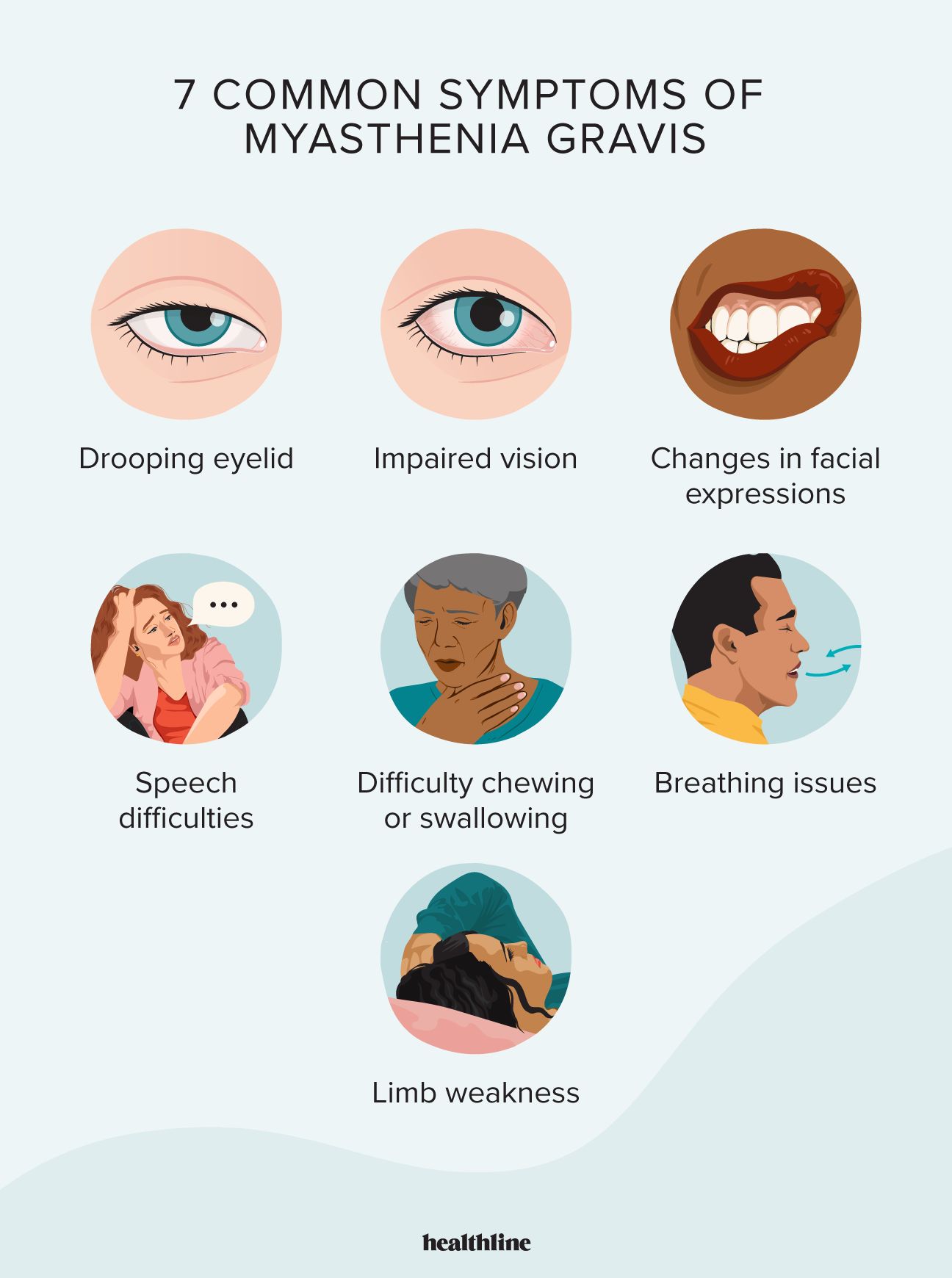This autoimmune disorder affects how well your nerves and muscles communicate, leading to a variety of symptoms.
Myasthenia gravis (MG) is a chronic autoimmune condition that affects signaling between the body’s nerves and muscles, leading to muscle weakness.
Symptoms of MG can appear anywhere on the body, but they can be different for everyone and vary in type and intensity. For example, some people experience muscle weakness localized to a specific area, though most have more generalized weakness.
Here’s what you might expect as a result of muscle weakness from MG.
MG can affect the muscles in one or both of your eyelids. As a result, the most common first MG symptom is ptosis (drooping eyelid).
MG can affect the muscles that move your eyeball, impairing vision. Diplopia (double vision) is another common eye symptom. It can occur when the muscles that move the eye become fatigued and don’t move in perfect coordination.
The longer you use your eyes, the more natural fatigue can compound weakness from MG. This often makes double vision worse later in the day.
When MG affects the face, it can cause generalized weakness that can affect your facial expressions. For example, your expression may appear “flat,” or “slack.”
Some may experience what’s called the myasthenia snarl. This is where the corners of your mouth don’t rise equally with the rest of your lips when you smile, resulting in a “snarl-like” expression.
An imaging study from 2020 notes that facial weakness in MG is most noticeable in the areas around the eyes and mouth.
MG can lead to weakness in your tongue, lips, mouth, and throat. This can affect your speech and cause changes in your voice, or dysphonia.
You might notice your words sound slurred, muffled, or have a hypernasal tone. You might not be able to change your vocal pitch, and your voice may “give out” from fatigue after speaking throughout the day.
According to the Myasthenia Gravis Foundation of America, more than 10% of people living with MG experience slurred speech.
When MG leads to weakness in your head and neck muscles, it can affect your throat, jaw, tongue, and mouth. This can lead to dysphagia, a condition that makes it difficult to chew and swallow.
You may notice it becomes difficult to initiate swallowing or that there’s a delayed response to feeling food in your mouth. For some people, solid foods may be more challenging to swallow due to muscle weakness in the throat.
Difficulty swallowing can also cause nasal regurgitation. This is where liquids flow from your nose after eating because the muscles at the back of the roof of your mouth are too weak to seal off the nasal passages properly.
MG can affect the muscles involved in breathing, including your diaphragm, intercostal muscles, and accessory breathing muscles. This can lead to:
- shortness of breath
- difficulty clearing mucous
- respiratory failure, also known as myasthenic crisis
According to a 2023 review, between 10% and 5% of people living with MG experience a myasthenic crisis at least once that requires treatment with mechanical ventilation.
MG can also affect the skeletal muscles of your limbs. Limbs may feel heavy, weak, or as if their movements are slowed. You may notice it’s difficult to climb stairs, pick up objects, or perform repetitive motions.
General feelings of weakness and fatigue can fluctuate throughout your day and worsen with activity.
Myasthenia gravis (MG) is an autoimmune condition that causes muscle weakness.
Early symptoms typically develop in the eyes. Facial and limb weakness, as well as respiratory challenges, are also possible MG symptoms. However, these can vary from person to person and range in severity and intensity.





